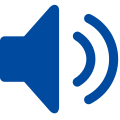Pharmacologic Substance
caffeine

caf·feine [ ka-feen, kaf-een, kaf-ee-in ]
Brand Names:
Anacin; Anacin Advanced Headache Formula; Arthriten Inflammatory Pain; Arthriten Max; Ascomp; Backaid IPF; Backprin; Bayer Back and Body Pain; Bayer Headache Relief; BC Arthritis; BC Headache; BC Original Formula; Cafcit; Cafergot; Capacet; Dvorah; Esgic; Exaprin; Excedrin; Excedrin Mild Headache; Excedrin Quick Tab; Excedrin Tension Headache; Fioricet; Fioricet with Codeine; Fiorinal; Fiorinal with Codeine; Jet-Alert; Migergot; No Doz; Norgesic; NoSnooze; Orphengesic; P-A-C Analgesic; Painaid ESF; Pamprin Max Formula; Panadol Extra; Pep-Back; Phrenilin Forte; Repan; Saleto; Sedalmex; Sed-Max; Stanback Headache Powder; Stanback Headache Powder Reformulated Jan 2011; Trezix; Vanatol; Vanquish; Vivarin; Vtol; Zebutal
Effect:
Bronchodilation; Cardiovascular Activity Alteration; Decreased Collecting Duct Water Permeability; Increased CNS Organized Electrical Activity
May Treat:
Apnea;
Fatigue
More Information:
Definitions related to caffeine:
-
1,3,7-trimethylxanthine, a central nervous system stimulant; action may be mediated by adenosine receptors.CRISP ThesaurusNational Institutes of Health, 2006
-
A methylxanthine alkaloid found in the seeds, nuts, or leaves of a number of plants native to South America and East Asia that is structurally related to adenosine and acts primarily as an adenosine receptor antagonist with psychotropic and anti-inflammatory activities. Upon ingestion, caffeine binds to adenosine receptors in the central nervous system (CNS), which inhibits adenosine binding. This inhibits the adenosine-mediated downregulation of CNS activity; thus, stimulating the activity of the medullary, vagal, vasomotor, and respiratory centers in the brain. This agent also promotes neurotransmitter release that further stimulates the CNS. The anti-inflammatory effects of caffeine are due the nonselective competitive inhibition of phosphodiesterases (PDEs). Inhibition of PDEs raises the intracellular concentration of cyclic AMP (cAMP), activates protein kinase A, and inhibits leukotriene synthesis, which leads to reduced inflammation and innate immunity.NCI ThesaurusU.S. National Cancer Institute, 2021
-
A methylxanthine naturally occurring in some beverages and also used as a pharmacological agent. Caffeine's most notable pharmacological effect is as a central nervous system stimulant, increasing alertness and producing agitation. It also relaxes SMOOTH MUSCLE, stimulates CARDIAC MUSCLE, stimulates DIURESIS, and appears to be useful in the treatment of some types of headache. Several cellular actions of caffeine have been observed, but it is not entirely clear how each contributes to its pharmacological profile. Among the most important are inhibition of cyclic nucleotide PHOSPHODIESTERASES, antagonism of ADENOSINE RECEPTORS, and modulation of intracellular calcium handling.NLM Medical Subject HeadingsU.S. National Library of Medicine, 2021
-
A substance found in the leaves and beans of the coffee tree, in tea, yerba mate, guarana berries, and in small amounts in cocoa. It can also be made in the laboratory, and is added to some soft drinks, foods, and medicines. Caffeine increases brain activity, alertness, attention, and energy. It may also increase blood pressure, heart rate, breathing rate, and the loss of water from the body in urine.NCI Dictionary of Cancer TermsU.S. National Cancer Institute, 2021
-
An alkaloid stimulant having a purine double-ring structure composed of eight carbons and four nitrogen atoms with methyl groups attached to the nitrogen atoms at the 1, 3, and 7 positions and having double bonds at the carbons in positions 2 and 6.CRCH Nutrition TerminologyCancer Research Center of Hawaii, University of Hawaii, 2021
-
Caffeine is a bitter substance that occurs naturally in more than 60 plants including Coffee beans; Tea leaves; Kola nuts, which are used to flavor soft drink colas; Cacao pods, which are used to make chocolate products. There is also synthetic (man-made) caffeine, which is added to some medicines, foods, and drinks. For example, some pain relievers, cold medicines, and over-the-counter medicines for alertness contain synthetic caffeine. So do energy drinks and "energy-boosting" gums and snacks. Most people consume caffeine from drinks. The amounts of caffeine in different drinks can vary a lot, but it is generally An 8-ounce cup of coffee: 95-200 mg; A 12-ounce can of cola: 35-45 mg; An 8-ounce energy drink: 70-100 mg; An 8-ounce cup of tea: 14-60 mg. Caffeine has many effects on your body's metabolism. It Stimulates your central nervous system, which can make you feel more awake and give you a boost of energy; Is a diuretic, meaning that it helps your body get rid of extra salt and water by urinating more; Increases the release of acid in your stomach, sometimes leading to an upset stomach or heartburn; May interfere with the absorption of calcium in the body; Increases your blood pressure.MedlinePlusU.S. National Library of Medicine, 2021
-
Caffeine, nitrogenous organic compound of the alkaloid group, substances that have marked physiological effects. Caffeine occurs in tea, coffee, guarana, mate, kola nuts, and cacao. Pure caffeine (trimethylxanthine) occurs as a white powder or as silky needles, which melt at 238 �C (460 �F); it...Encyclopedia Britannica, Inc., 2020
Return to OpenMD Medical Dictionary
> C
This content should not be used in place of medically-reviewed decision support reference material or professional medical advice. Some terms may have alternate or updated definitions not reflected in this set. The definitions on this page should not be considered complete or up to date.